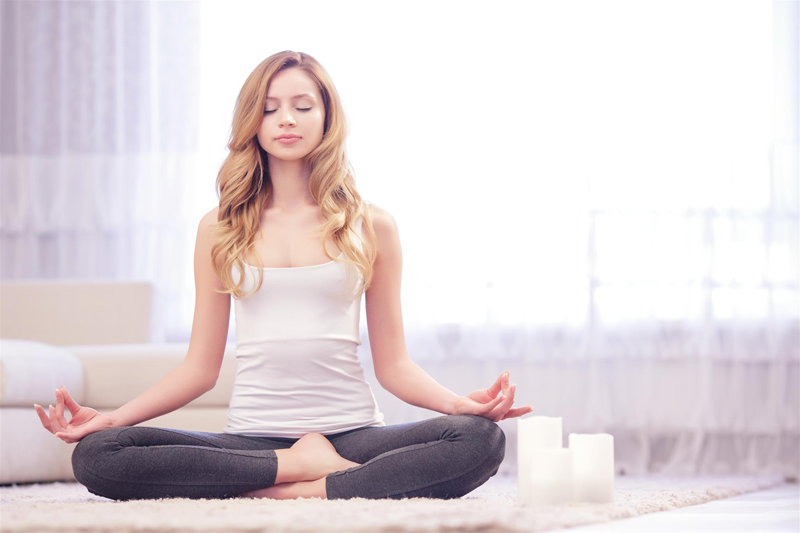
4 Starter Tips for Yoga Teachers
6th September 2018
What is Yoga Sukha?
11th September 2018How to Create Space for Your Consciousness?

With social media so prominent in modern life, it can feel as though we are being influenced on every level. We are shown exactly what we should buy, want, and even think. Although many people find this helpful, it can quickly make us lose touch with our consciousness. Being told exactly how to feel is all fun and games until we need to think for ourselves; suddenly, the natural process becomes a challenge. As we feel disconnected from our inner guidance, making the right decision can be tough. Thankfully, though, it is possible to reconnect with your truth through a few simple steps. In this article, we explore how to create space for your consciousness.
Meditate Regularly
One of the best ways to make space for your consciousness is to get your yoga pants on and meditate. When we meditate, we take time to relax, reflect, and revitalise. During this time, the silence encourages us to listen to our inner guidance and begin to reconnect. Essentially, the more you meditate, the more connected you will feel to your consciousness.
Sometimes, we are led to believe that meditation must last for hours. This misleading belief can make us feel as though we don’t have time to meditate; however, this is not the case! Meditation does not have to last for hours to be effective. In fact, meditating for just a few minutes each day can be beneficial. Better still, there are a number of different ways to meditate, so you can choose the style that suits you best. Below, we discuss some of the most popular techniques.
Mindfulness Meditation
Mindfulness Meditation is one of the most popular styles of meditation. Focussing on the sensations within your body, this technique teaches you to focus on the present. To practice Mindfulness Mediation, start by taking a few deep breaths. After a few seconds, take note of the sensations within your body; for instance, do you feel tingly, fluid, or numb? During this technique, try not to analyse the feelings. Instead, allow them to come and go freely.
Walking Meditation
Walking Meditation is ideal for those who hate sitting still. As this technique can be practised anywhere, it is easy to fit into your daily routine. To practice Walking Meditation, take a stroll through an aesthetically pleasing environment. As you move, notice how your body feels. Focus on the swinging of your arms and the lifting of your legs. If you feel your mind start to wander, gently bring it back to your movement.
Mantra Meditation
Mantra Meditation is another popular technique. Often, the Sanskrit word ‘Om’ is used as a mantra; however, you can use any meaningful word or phrase to focus the mind. To practice Mantra Meditation, find a quiet space and think of your mantra. When you’re ready, slowly repeat your word aloud or silently. Repeating the mantra will help to focus your mind on the present.
Finish Tasks Before Starting New Ones
When creating space for your consciousness, try to keep your plate as clear as possible. If you can, finish off old tasks before starting new ones. Although setting new goals can feel productive, it can be exhausting if you’re just adding new items to your list. Over time, this can lead to deflation or burnt out and hinder your progression. If you want to set a new goal, that’s fine! Just try to remove a pre-existing goal or task to make space for your new project.

Take Time to Reflect
When starting a new project, it’s common for enthusiasm and adrenaline to take over. For a while, this will keep us energised, motivated, and ready to take on the world. However, we can start to feel overwhelmed if we don’t take a break. When you start a new endeavour, plan ahead for your first break. If you know you’re likely to feel tired after a few days, schedule your break for then. When the time comes, take time to reflect, recharge, and ask yourself how you’re doing. This will allow your consciousness to get a look in before the adrenaline takes over! Taking regular breaks to reflect will keep you connected with your inner-guidance, even when things get a little hectic!
Focus on the Present
For many of us, looking ahead makes us feel overwhelmed or uneasy. When we try to focus on too many things at once, our brain can start to feel overloaded and frazzled. When this happens, it can be hard to hear our inner guidance amongst the stresses of day-to-day life. Thankfully, there are ways to change this. In the Yoga Sutras, Patanjali wrote that “Yoga is Now”. Listening to this and focussing on the present can help you to find your inner quiet.
Give yourself time to close your eyes and focus on your breathing. During this time, try to clear your mind of work and family commitments and focus on the present. After a few minutes, open your eyes and notice the change to your body and mind. You should instantly feel less stressed and ready to tackle the rest of the day.
Limit Screen Time
As we touched upon earlier, social media plays a huge role in modern life. While there are many benefits to this, there are also some negatives; for instance, we can start to feel inadequate after scrolling through images of seemingly perfect lives. In a world led by ‘influencers’, it’s hard to believe that we don’t need to look, act, or feel a certain way. Over time, we can lose touch with our consciousness and make decisions based on the people around us. To prevent this from happening, make sure to have some screen-free time each day. Before you go to sleep, consider reading a book or listening to a podcast instead of scrolling through Instagram. Not only will this create space for your consciousness, it will also improve your sleep quality.
In Summary
If you’re feeling out of touch with your inner self, follow the steps above to create space for your consciousness. As many of the methods focus on calming the mind, it’s good to create a place in your home to relax. If you’ve got the space, fill a spare room with cosy blankets and an oil burner for maximum relaxation. If you’re still struggling to get into the right mindset, consider picking up a yoga jewellery. Described as a single toned flute, the mindfulness tool is ideal for those hoping to relax and revitalise.

